Survival improves with seriola species
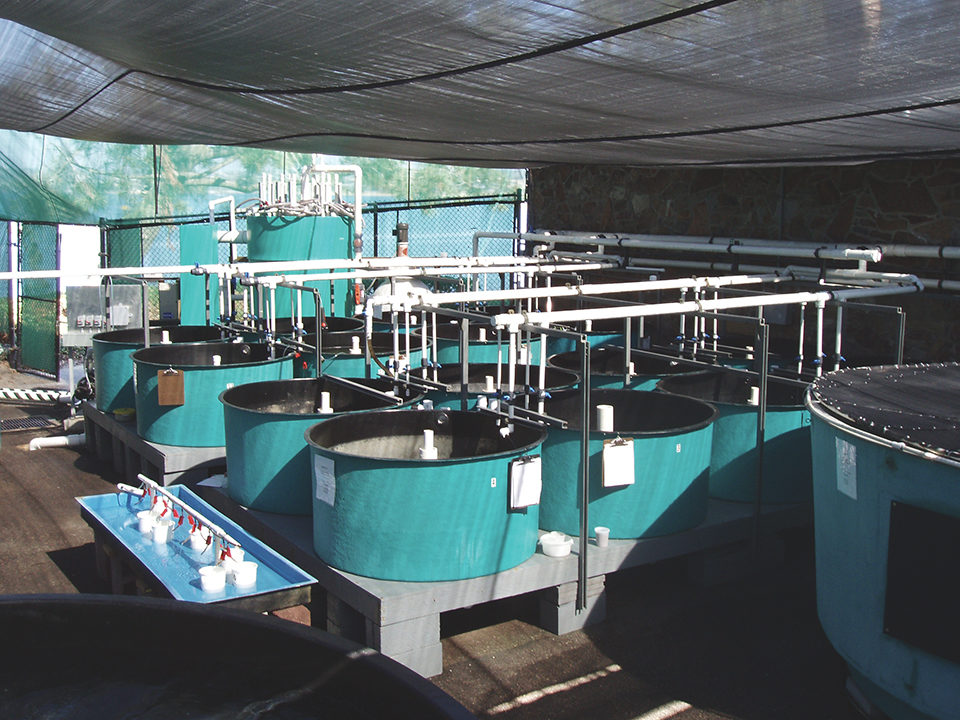
Fish species of the genus Seriola are very valuable, prized by fishermen as game fish and by seafood lovers seeking a white, fine-textured flesh. Primarily in the sushi and sashimi sectors, Seriola achieve $12-15 per kilogram prices for premium product.
Although there are over 140 species of Seriola, only four are farmed commercially, including yellowtail “hamachi” or Japanese amberjack, greater amberjack, Pacific amberjack and yellowtail jack (S. lalandi). In the United States, the fish are a potential candidate for the country’s emerging offshore aquaculture industry.
Asian countries represent 99 percent of the world’s annual production of approximately 140,000 metric tons (MT) for Seriola species. Although hatchery technologies exist in these countries, they rely heavily on wild-caught juveniles to stock into grow-out cages. Hatchery and grow-out facilities for S. lalandi in Australia and New Zealand contributed approximately 1,100 MT of product in 2005.
HSWRI broodstock program
At the Hubbs-SeaWorld Research Institute’s Mission Bay Laboratory in California, USA, the only hatchery in North America for the pelagic schooling S. lalandi, adult yellowtail jacks are maintained in a 160-cubic-meter maturation pool. The 12 males and nine females – captured in the wild in September 2004 – spawned voluntarily multiple times between May and July of 2005 (Fig. 1).

The fish are fed to satiation every day at around 2.8 percent body weight. Their diet consists of fresh-frozen sardines, smelt, and squid, and vitamins are supplemented three times per week. Temperature and photoperiod conditions are not controlled. The annual ambient water temperature typically ranges 14 to 24 degrees-C. Oxygen saturation is maintained at 93 to 102 percent.
Spawning
Eggs were first noticed in the pool in early May 2005 and an egg trap was installed immediately, but earlier spawns may have been missed. From then to mid-July, 13 separate spawning events occurred, yielding over 5.8 million eggs. The number of eggs per spawn was 44,932 to 1,270,080 and averaged 480,131. Average egg diameter was 1.47 millimeters.
The spawning season fecundity for this group was 143,721 eggs per kilogram. Spawning was not directly observed, so the number of females contributing each night could not be determined. Egg viability ranged 18 to 100 percent with an average of 60 percent.
Hatching, larval rearing
Eggs were stocked at 100 eggs per liter into 1.0-cubic-meter rearing tanks supplied with flow-through, sand-filtered sea water at 2.1 liters per minute. Hatching occurred after 72 hours with a success rate of 80 to 90 percent. Tank water was greened daily during premetamorphosis with a paste of Nannochloropsis sp. algae.
Larvae were fed enriched rotifers and artemia nauplii at two and five days posthatch, respectively, before being weaned onto 100- to 200-µ extruded dry feed beginning at 25 days posthatch. Juvenile fish were fed a manufactured marine grower diet yielding average specific growth rates of 1.2 percent body weight per day. Feed-conversion ratios were as low as 1.2:1 over a 10-month period, with rearing temperatures ranging 14.4 to 18.9 degrees-C.
In an effort to document larval development and evaluate batches of eggs for fitness, eggs and larvae were measured at various stages. Characteristics such as symmetry of cell division, total length, fin and tail development, mouth opening, swim bladder inflation, gut fullness, and eye diameter were recorded.
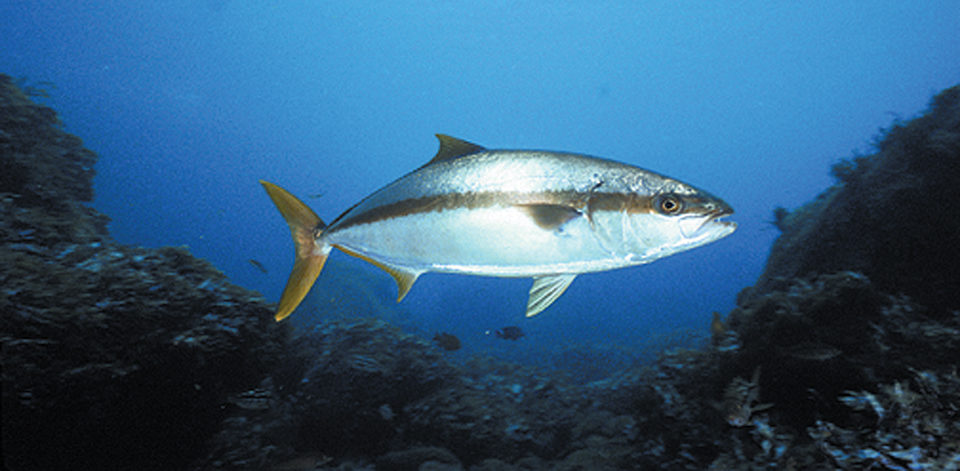
High mortality
Rearing trials were compromised by a series of red tide events, as well as 100-year storms, which contributed to very poor water quality and subsequent high mortality. These events also likely dampened spawning activity in general.
Under these conditions, larval survival for the 2005 season was less than 1 percent for all batches. The majority of the mortalities occurred eight to 12 days post-hatch, which was consistent with rearing results for other Seriola species. During this critical phase, when the larvae attempt to open their mouths, they have a tendency to sink to the bottom of the rearing tank, where water quality is often poor. Following the findings of other investigators, aeration was increased during this phase, but survival did not improve.
Cannibalism became an important source of mortality at 20 to 30 days post-hatch, which coincided with attempts to wean the larvae off live feed. Increased water velocity and the use of automatic feeders helped reduce cannibalism. Uninflated swim bladders were also common among larval yellowtail early in the season. The use of surface skimmers and increased aeration reduced this problem over time. Internal lesions became problematic in older, weaned fish, and were consistent with disseminated bacterial infections.
For the 2006 spawning season, researchers installed recirculating sea water systems to achieve greater environmental control in both the broodstock and larval-rearing systems. Research is also focusing on nutrition for all life stages. Yellowtails started spawning at the end of April, and over 5 million eggs have been stocked so far.
Survival is markedly improved over last year, and 2006 production targets are expected to be met.
(Editor’s Note: This article was originally published in the July/August 2006 print edition of the Global Aquaculture Advocate.)
Now that you've reached the end of the article ...
… please consider supporting GSA’s mission to advance responsible seafood practices through education, advocacy and third-party assurances. The Advocate aims to document the evolution of responsible seafood practices and share the expansive knowledge of our vast network of contributors.
By becoming a Global Seafood Alliance member, you’re ensuring that all of the pre-competitive work we do through member benefits, resources and events can continue. Individual membership costs just $50 a year.
Not a GSA member? Join us.
Authors
-
Paula C. Sylvia
Hubbs-SeaWorld Research Institute
2595 Ingraham Street
San Diego, California 92109 USA -
Mark Drawbridge
Hubbs-SeaWorld Research Institute
2595 Ingraham Street
San Diego, California 92109 USA -
Lisa Goldie
Hubbs-SeaWorld Research Institute
2595 Ingraham Street
San Diego, California 92109 USA -
Ryan Greathouse
Hubbs-SeaWorld Research Institute
2595 Ingraham Street
San Diego, California 92109 USA -
Shane Hughes
Hubbs-SeaWorld Research Institute
2595 Ingraham Street
San Diego, California 92109 USA -
Keri Maull
Hubbs-SeaWorld Research Institute
2595 Ingraham Street
San Diego, California 92109 USA -
Dave Jirsa
Hubbs-SeaWorld Research Institute
2595 Ingraham Street
San Diego, California 92109 USA
Tagged With
Related Posts
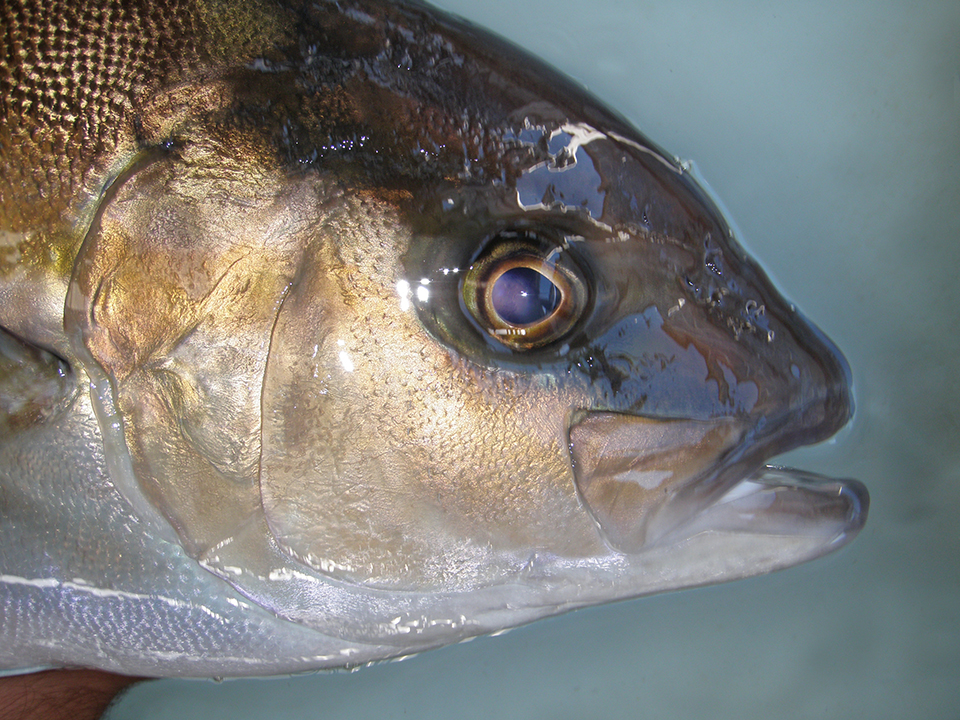
Health & Welfare
Advances in yellowtail larval rearing
The University of the Canary Islands in Spain is researching yellowtail broodstock management and larval rearing to promote aquaculture diversification in Europe.
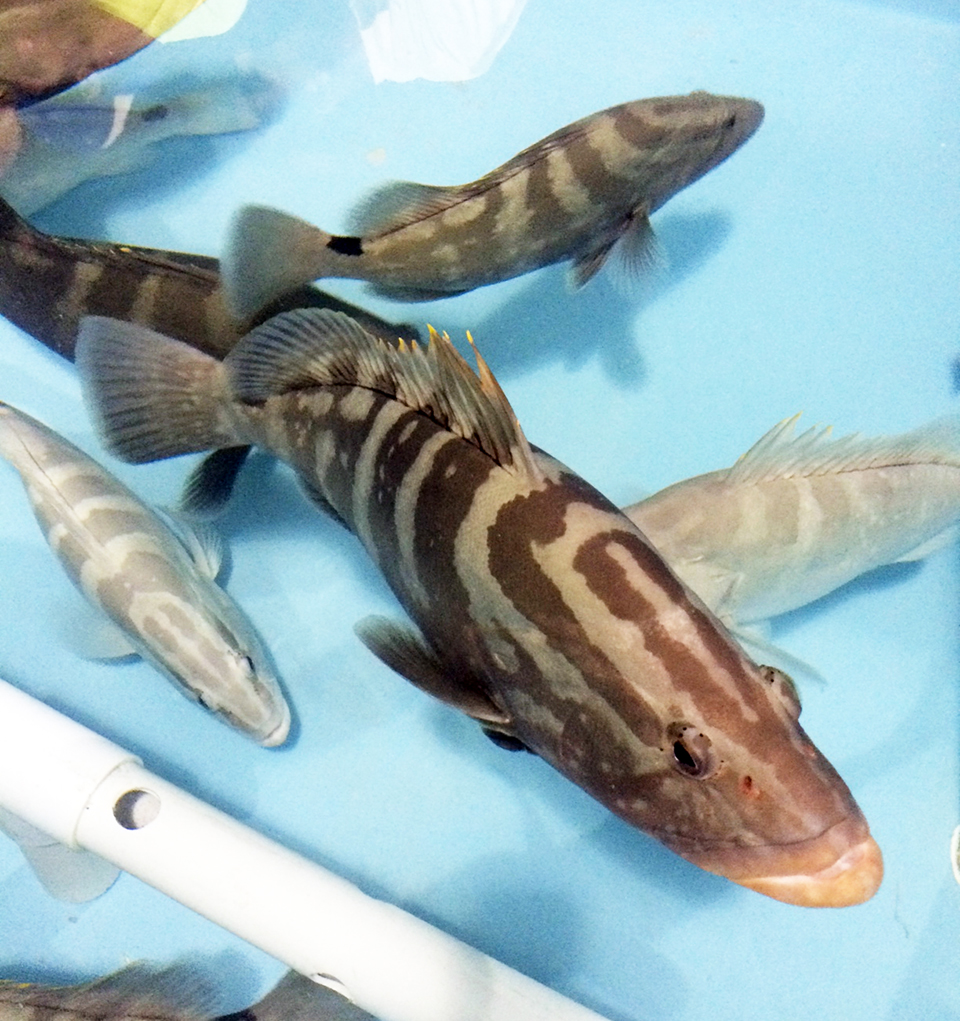
Intelligence
Bahamas venture focuses on grouper, other high-value marine fish
A new venture under development in the Bahamas will capitalize on Tropic Seafood’s established logistics and infrastructure to diversify its operations from processing and selling wild fisheries products to include the culture of grouper and other marine fish.
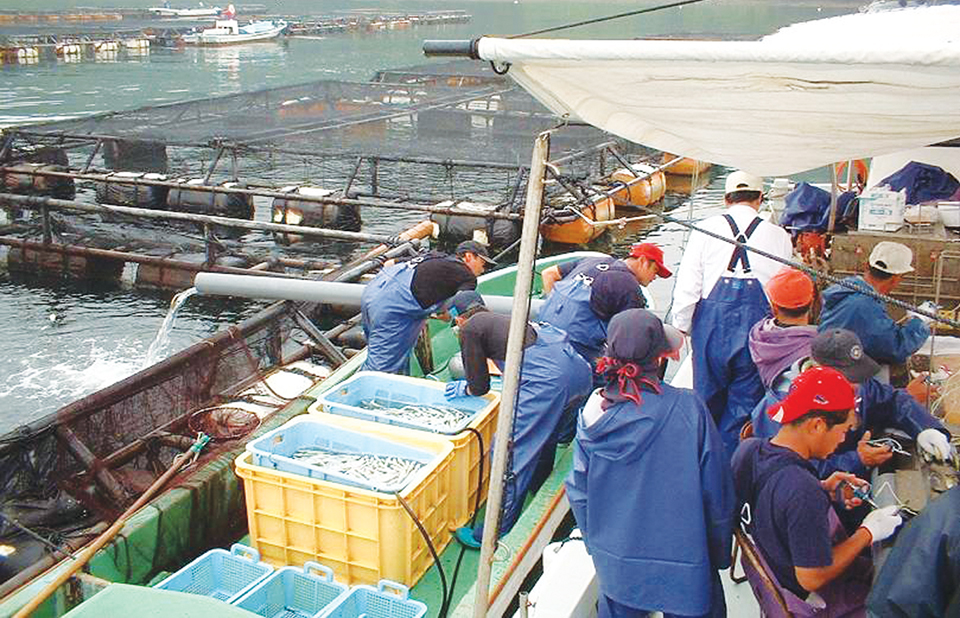
Health & Welfare
Bivalent vaccine protects yellowtails, amberjack against pasteurellosis
The authors developed an efficacious combination vaccine against P. piscicida and L. garvieae for yellowtail and amberjack. Field trials showed positive results, and the vaccine was approved for use in Japan.
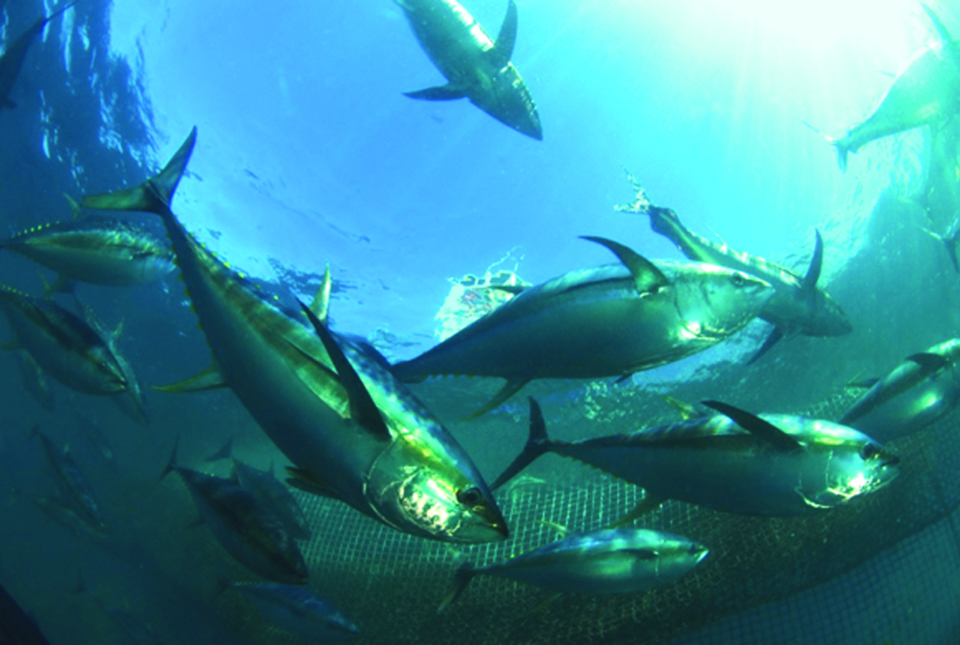
Health & Welfare
Marine fish culture in Mexico
Mexico has a wide diversity of areas and water temperatures that are suitable for a variety of aquaculture species.


